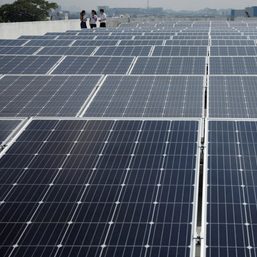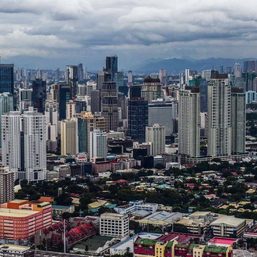SUMMARY
This is AI generated summarization, which may have errors. For context, always refer to the full article.
![[In This Economy] Something’s broken, and it’s hidden by ‘high’ economic growth](https://www.rappler.com/tachyon/2023/11/something-broken-hidden-economic-growth-November-10-2023.jpg)
Total production in the Philippines, as measured by gross domestic product or GDP, grew by 5.9% in the third quarter of 2023.
This was “higher-than-expected” for a number of reasons. It’s certainly higher than the dismal 4.3% growth in the second quarter of this year. Analysts’ median estimate was just 4.9%. And we’re currently the fastest-growing among the biggest ASEAN economies.
But such figure is not as pretty as it seems. Let’s dissect the data.
The problem with 5.9% growth is that it hides the fact that some sources of growth have substantially weakened, if not virtually disappeared.
Figure 1 shows that historically, consumption has been the biggest driver of spending growth (look at the green bars). But note that the contribution of consumption has been steadily declining from early 2022. Why has consumption weakened? Is it because of the steady rise of most prices since last year?
More worryingly, investment spending (blue bars) hasn’t contributed at all to growth since the second quarter of 2023 (April to June).
The fact is, our economy could have grown much more rapidly if consumers were more ready to spend, and investors were more willing to invest.
Figure 1.
Thankfully, there was some rebound of government spending. According to Socioeconomic Planning Secretary Arsenio Balisacan, some government agencies heeded the economic managers’ calls to address bottlenecks in spending.
Net exports (exports less imports) also contributed positively to growth. But based on past experience, this isn’t all good. For a small, developing country like ours, negative net exports may be more consistent with fast growth. Said one recent research by Bangko Sentral economists, “imports have a positive and significant impact on potential output growth, but exports do not.”
Weaker consumption, investment
Let’s drill down on consumption and investment.
Figure 2 shows that among the consumption categories, food spending growth has been virtually absent since early this year, likely due to the acceleration of prices since last year.
If only food spending wasn’t so weak, that 5.9% growth could have been a lot stronger and higher.
Figure 2.
As for investments, Figure 3 shows that government construction spending is at its strongest since mid-2021. But this was totally offset by a big reduction or “drawdown” of inventory, which hopefully does not imply production or supply chain disruptions.
Note as well the near-zero contribution of construction by private corporations. How come? Maybe this is due to the high costs of construction materials and other inputs? Or is this the effect of higher borrowing costs, due to the interest rate hikes of the Bangko Sentral since last year?
Figure 3.
Sectoral viewpoint
Now, from the lens of various industries, industry and services contributed more to growth. (Once more, agriculture contributed nothing.)
Figure 4.
But there are still signs of weakness in industrial growth. Figure 5 shows that while construction growth is much stronger, manufacturing growth is gradually dying out. What gives?
Figure 5.
As for services, note the gradual decline of the contribution of trade (historically the biggest contributor to services).
We also haven’t gone back to pre-pandemic levels, where some sectors – real estate and public defense/administration – contributed a lot more to growth than today.
Figure 6.
Something’s broken
Back in August I asked in this column, “Is the Philippine economy grinding to a halt?”
This is because of the anemic second quarter 2023 growth figures. Nearly all spending categories (save exports) dropped from the first quarter. All sectors saw lower production over the same period.
The third quarter data tell me that I and others, who even predicted a mild recession, were wrong. And I’m happy to be wrong on this one.
But I can’t help but think that the latest data hide the fact that there’s something broken in the economy, especially when it comes to consumption and investments.
My guess is that the trends have something to do with the combo of runaway inflation and higher interest rates we’ve seen since last year.
So long as prices are so high, and inflation is off-target, consumers will think twice before spending. Inflation is indeed going down again as of October 2023, at 4.9%. But that’s still high relative to the 2-4% target of the government.
As for interest rates, the Bangko Sentral surprisingly raised its policy rate again in late October. They might keep doing that for as long as inflation is unabated. The problem is that continual rate hikes may further dampen spending (especially investments) in the coming months. And that’s by design: spending is being deliberately dampened in a bid to combat inflation.
Things get trickier when inflation is caused by supply factors (like food and oil prices), which lie beyond the control of the BSP. Policymakers need to study this further and discern whether inflation is borne more by supply or demand factors.
If it’s the former more than the latter, then rate hikes may act like cancer drugs: they’re fighting inflation (the cancer cells) at the expense of sectors of the economy that rely a lot on borrowings (normal cells). Fighting inflation will come at a steep price.
My hunch is that authorities like the Department of Agriculture (led up until recently by President Ferdinand Marcos Jr.) could be doing a lot more against food inflation, but aren’t doing so. In my books, such inaction is one of the biggest reasons to blame for the weaker economy we’re all enduring now. – Rappler.com
JC Punongbayan, PhD is an assistant professor at the UP School of Economics and the author of False Nostalgia: The Marcos “Golden Age” Myths and How to Debunk Them. JC’s views are independent of his affiliations. Follow him on Twitter (@jcpunongbayan) and Usapang Econ Podcast.
1 comment
How does this make you feel?




![[ANALYSIS] Why do we pay higher power rates when we have power outages?](https://www.rappler.com/tachyon/2024/07/tl-higher-power-rates-higher-power-outages.jpg?resize=257%2C257&crop=401px%2C0px%2C1080px%2C1080px)
![[Vantage Point] Philippine economic reforms run into headwinds](https://www.rappler.com/tachyon/2024/05/ph-economic-headwind-may-2024.jpg?resize=257%2C257&crop_strategy=attention)
![[ANALYSIS] Promoting PPP via a sufficiently empowered media](https://www.rappler.com/tachyon/2024/04/PPP-and-media.jpg?resize=257%2C257&crop=365px%2C0px%2C720px%2C720px)
![[In This Economy] Here’s a new paper by UP economists on economic charter change](https://www.rappler.com/tachyon/2024/04/TL-foreign-direct-investments-apr-12-2024.jpg?resize=257%2C257&crop=299px%2C0px%2C720px%2C720px)

![[ANALYSIS] Not all REITs are created equal](https://www.rappler.com/tachyon/2024/06/tl-not-all-reits-are-created-equal-06012024.jpg?resize=257%2C257&crop=233px%2C0px%2C720px%2C720px)

![[ANALYSIS] Search for stocks that continue to sizzle](https://www.rappler.com/tachyon/2024/04/search-stocks-that-sizzle-April-5-2024.jpg?resize=257%2C257&crop_strategy=attention)


![[In This Economy] Is the Philippine economy stable?](https://www.rappler.com/tachyon/2024/05/philippine-economy-stable-may-10-2024.jpg?resize=257%2C257&crop=461px%2C0px%2C1080px%2C1080px)


![[In This Economy] Is the Philippines quietly getting richer?](https://www.rappler.com/tachyon/2024/04/20240426-Philippines-quietly-getting-richer.jpg?resize=257%2C257&crop=194px%2C0px%2C720px%2C720px)
![[Vantage Point] Joey Salceda says 8% GDP growth attainable](https://www.rappler.com/tachyon/2024/04/tl-salceda-gdp-growth-04192024.jpg?resize=257%2C257&crop_strategy=attention)




![[In This Economy] Peso approaches P60 per dollar once more. So what?](https://www.rappler.com/tachyon/2024/05/TL-peso-dollar-economy-may-24-2024.jpg?resize=257%2C257&crop=302px%2C0px%2C720px%2C720px)
Thanks again to Prof. JC Punongbayan for another enlightening economic article, “Something’s broken, and it’s hidden by ‘high’ economic growth.” As usual, the Marcos Disinformation machinery boasted of the high third quarter of 2023 GDP growth. But as Prof. Punongbayan pointed out: we have weaker consumption and investment, weakening services and industrial sectors, and the zero-contributing agriculture sector. Most notable are the gradually dying manufacturing sector and the zero-contributing agricultural sector. The challenge is great for both the DTI for the recovery of the manufacturing sector and DA (which has a newly appointed Secretary) in dealing with the problems of the agriculture sector. Without this article from Prof. JC Punongbayan, we could have been easily misled by the high economic growth touted by President Marcos Jr. without seeing the broken parts of our national economy.